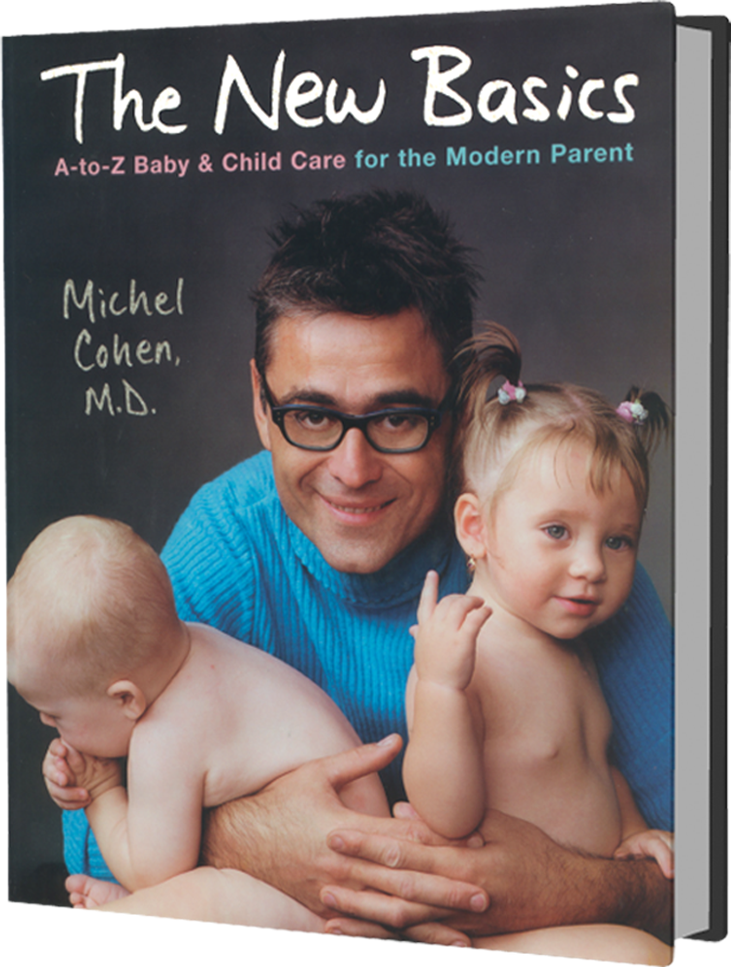
Blood
In the Diaper
 Blood can appear in the diapers of newborns for many of these benign reasons:
Blood can appear in the diapers of newborns for many of these benign reasons:
- Because eating is a new process, the intestine can become slightly irritated, resulting in a few temporary streaks of blood. Persistent blood in the stools of formula-fed babies can be a sign of intolerance.
- Some parents (but not you, right?) follow recommendations to stimulate a baby’s rectum with a thermometer to help relieve the baby of stools. Besides interfering with the natural defecation process, this can obviously irritate the area and cause bleeding. I suggest you stay away from this barbaric practice.
- For Lucy, blood in the diapers may be the result of a natural but surprising hormonal process. She could have assumed some of your maternal hormonal profile and then shed those hormones, resulting in a quasi-menstrual process that can produce a tiny amount of blood in the first couple of weeks.
- Finally, not everything in a diaper that looks like blood is blood. The normal precipitation of the urine into crystals can appear as red-tinged stains, especially in newborns. This is not a reliable sign of dehydration, no matter what you may read in some books.
- Blood in Lucy’s stools can also result, to a lesser degree, from causes that usually affect toddlers. Described below, these include stomach bugs and a blockage of the intestine called intussusception.
In Vomit
You may see blood in vomit or spit-up when a baby has been ingesting milk through a cracked nipple, even if the fissure is not obvious. There is no reason to be alarmed or to discontinue nursing. When the fissure heals, the blood will disappear.
In Stools
 For Jimmy, blood in the stool is usually the result of a fissure caused by constipation. If the stools are hard and his pain is intense, you can give him a glycerin suppository, repeating it daily until the fissure heals. It’s more important, however, that you resolve the constipation by limiting the starch in his diet [See: Constipation].
For Jimmy, blood in the stool is usually the result of a fissure caused by constipation. If the stools are hard and his pain is intense, you can give him a glycerin suppository, repeating it daily until the fissure heals. It’s more important, however, that you resolve the constipation by limiting the starch in his diet [See: Constipation].
- If blood in the stool is accompanied by diarrhea, this may point to a stomach bug [See: Stomach Bug].
- In rare cases, blood in the stool can be caused by a mechanical blockage called intussusception, which also causes intense belly pain and vomiting. It requires immediate medical attention.
In Vomit
The effort of vomiting can provoke a small amount of bleeding from a little tear in the upper digestive system. It usually doesn’t recur; there’s no cause for concern. For a large amount of blood, seek medical attention.
In Ears
If blood leaks from the ears, mixed with pus, it usually indicates a perforated eardrum caused by an ear infection, which you either already know about or will discover thanks to this unfortunate bleeding [See: Ear Infections].
In Noses
This is your average benign nosebleed, usually caused either by nose picking or by warm weather and dry air [See: Nosebleeds].




 MEDICATION DOSAGE
MEDICATION DOSAGE

